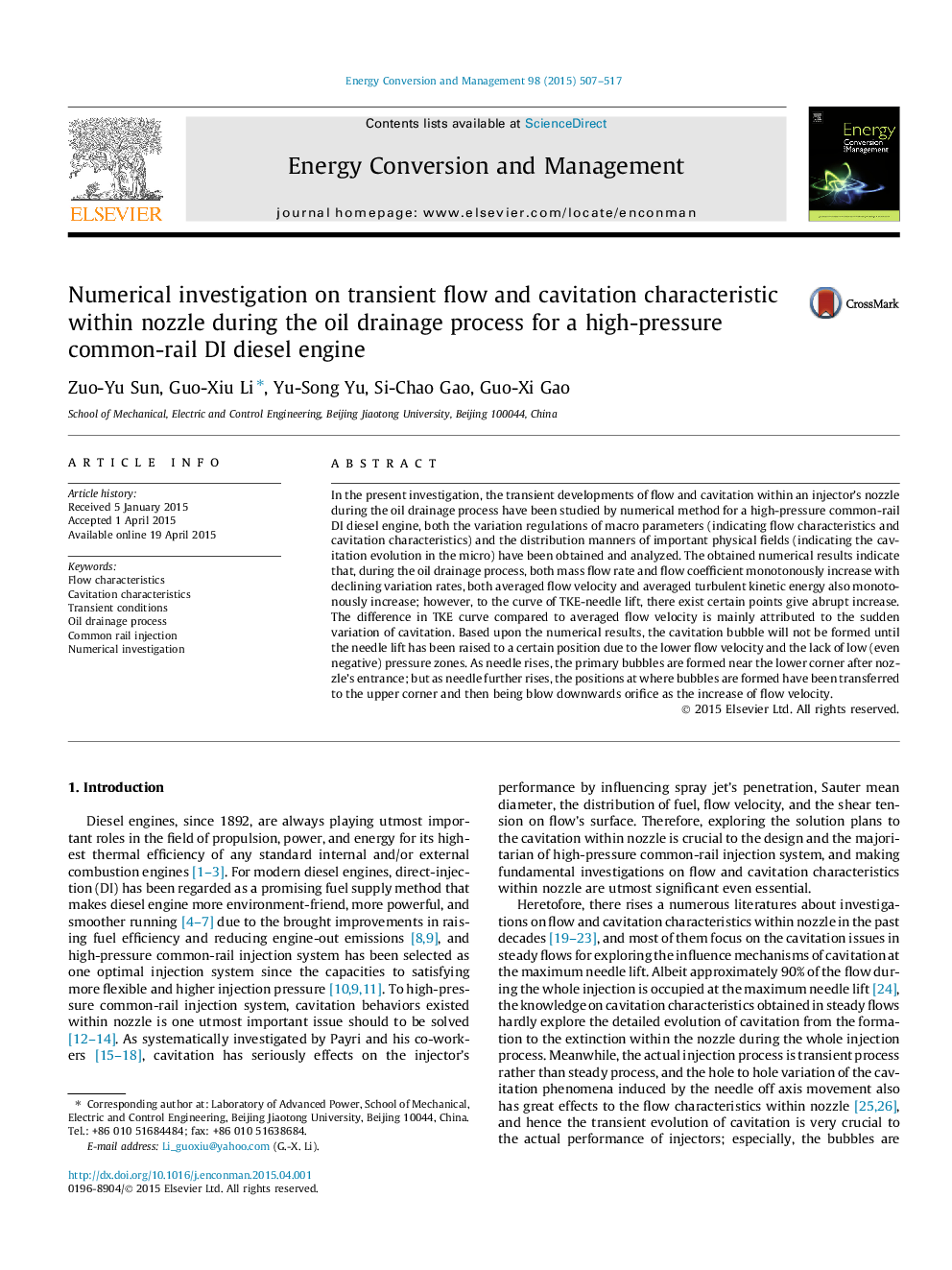| کد مقاله | کد نشریه | سال انتشار | مقاله انگلیسی | نسخه تمام متن |
|---|---|---|---|---|
| 763775 | 1462864 | 2015 | 11 صفحه PDF | دانلود رایگان |
• The flow process within nozzle during oil drainage process were studied.
• The effects of needle movement on flow characteristics were studied.
• The cavitation characteristics in a transient flow were numerical studied.
In the present investigation, the transient developments of flow and cavitation within an injector’s nozzle during the oil drainage process have been studied by numerical method for a high-pressure common-rail DI diesel engine, both the variation regulations of macro parameters (indicating flow characteristics and cavitation characteristics) and the distribution manners of important physical fields (indicating the cavitation evolution in the micro) have been obtained and analyzed. The obtained numerical results indicate that, during the oil drainage process, both mass flow rate and flow coefficient monotonously increase with declining variation rates, both averaged flow velocity and averaged turbulent kinetic energy also monotonously increase; however, to the curve of TKE-needle lift, there exist certain points give abrupt increase. The difference in TKE curve compared to averaged flow velocity is mainly attributed to the sudden variation of cavitation. Based upon the numerical results, the cavitation bubble will not be formed until the needle lift has been raised to a certain position due to the lower flow velocity and the lack of low (even negative) pressure zones. As needle rises, the primary bubbles are formed near the lower corner after nozzle’s entrance; but as needle further rises, the positions at where bubbles are formed have been transferred to the upper corner and then being blow downwards orifice as the increase of flow velocity.
Journal: Energy Conversion and Management - Volume 98, 1 July 2015, Pages 507–517
